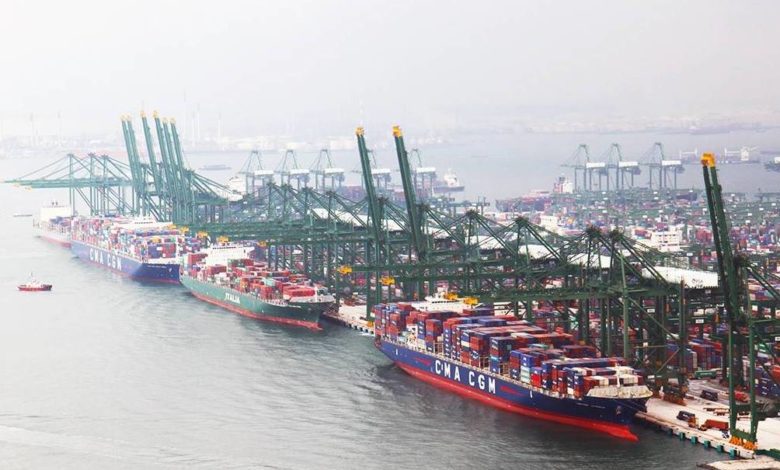Singapore brings shuttered terminals back online to battle severe box congestion

To staunch the severe congestion building up at the world’s largest container transhipment hub, PSA Singapore has reactivated older berths and yards that have previously been decanted at Keppel Terminal, while also adding significant manpower to battle the box build-up.
“Port congestion has returned to haunt the container markets, with Singapore becoming the latest chokepoint,” warned a report from Asian container consultancy Linerlytica, published on Tuesday, which noted berthing delays are now up to seven days at the world’s second largest container port with the total capacity waiting to berth rising to more than 500,000 teu in recent days.
Carriers will continue to push for higher and higher freight rates
“The severe congestion has forced some carriers to omit their planned Singapore port calls, which will exacerbate the problem at downstream ports that will have to handle additional volumes,” Linerlytica pointed out. The delays have also resulted in vessel bunching.
“The increased demand on container handling in Singapore is a result of several container lines discharging more containers in Singapore as they forgo subsequent voyages to catch up on their next schedules. The number of containers handled per vessel has also increased,” the Maritime and Port Authority (MPA) of Singapore stated in an update on what the Southeast Asian republic was doing to counter the boxship traffic.
In addition to the eight existing berths in Tuas Port, three new berths will commence operations later this year. This will increase overall port handling capacity. PSA plans to accelerate the commissioning of these new berths to help increase overall container handling capacity in the near term.
Many other Asian ports including Shanghai, Qingdao and Port Klang are also experiencing congestion.
Reports from India suggest that Mediterranean Shipping Company (MSC), the world’s largest container carrier, has started using Indian ports such as Kamarajar and Visakhapatnam for its transhipment operations as congestion in Singapore and Colombo have hampered schedule reliability.
Ports and liners are having to contend with the effective closure of the Suez Canal thanks to Houthi attacks from Yemen, as well as an early peak season, something that has pushed freight rates to all-time highs – bar the covid era – this month.
“The early arrival of peak season is adding to the cocktail of uncertainty in the market. Back at the start of 2024 you could point to the Red Sea crisis as the root cause of spot rate increases, this time around it is far more nuanced,” commented Peter Sand, chief analyst at Xeneta, a freight rate platform.
“Ocean freight carriers have tried to remedy the diversions in the Red Sea by increasing transshipments in the western Mediterranean as well as in Asia, but this has led to severe port congestion in several hubs,” Sand explained.
Bank of America in a shipping report issued earlier this week warned that its base case only sees a return to normal Red Sea transits in April 2025.
Drewry’s composite spot World Container Index increased 4% yesterday to $4,226 per feu, having started May at $2,725 per forty-foot box, a 55% leap in the space of less than a month.
The Shanghai Containerized Freight Index, another key spot indicator, published today, shot up by 12.63% to 3044.77 points, the first time the index has been above 3,000 points since August 2022.
“Carriers will continue to push for higher and higher freight rates so the situation may get worse for shippers before it gets better,” Xeneta’s Sand warned.

“previously been decanted”? Really?